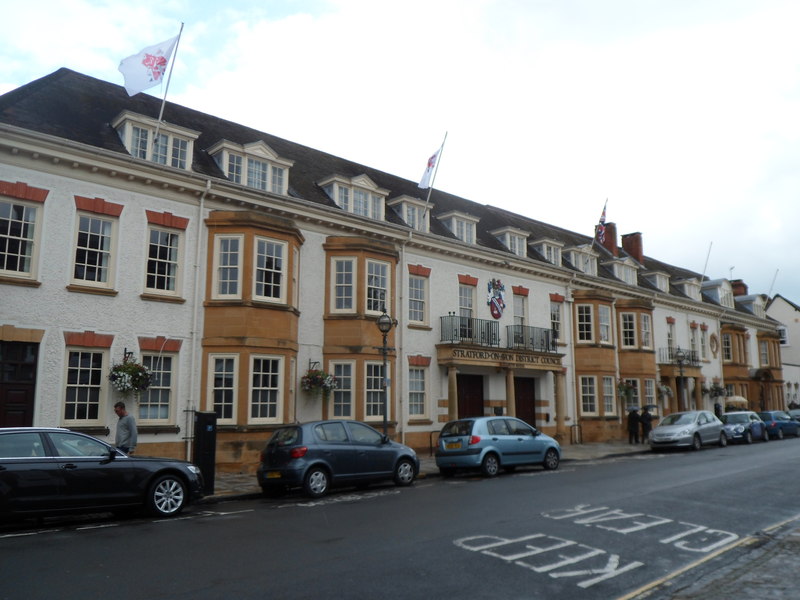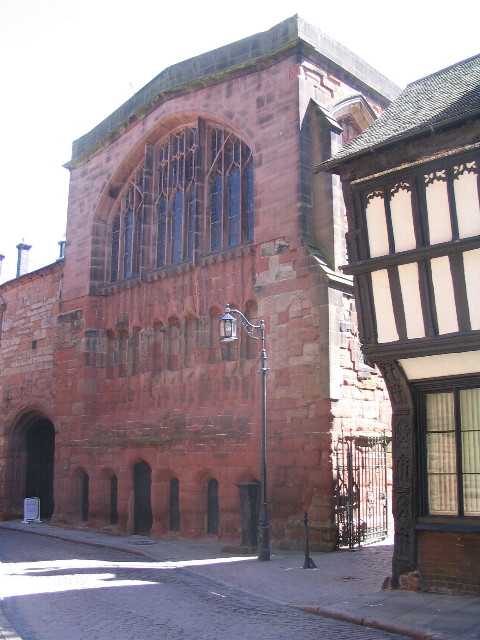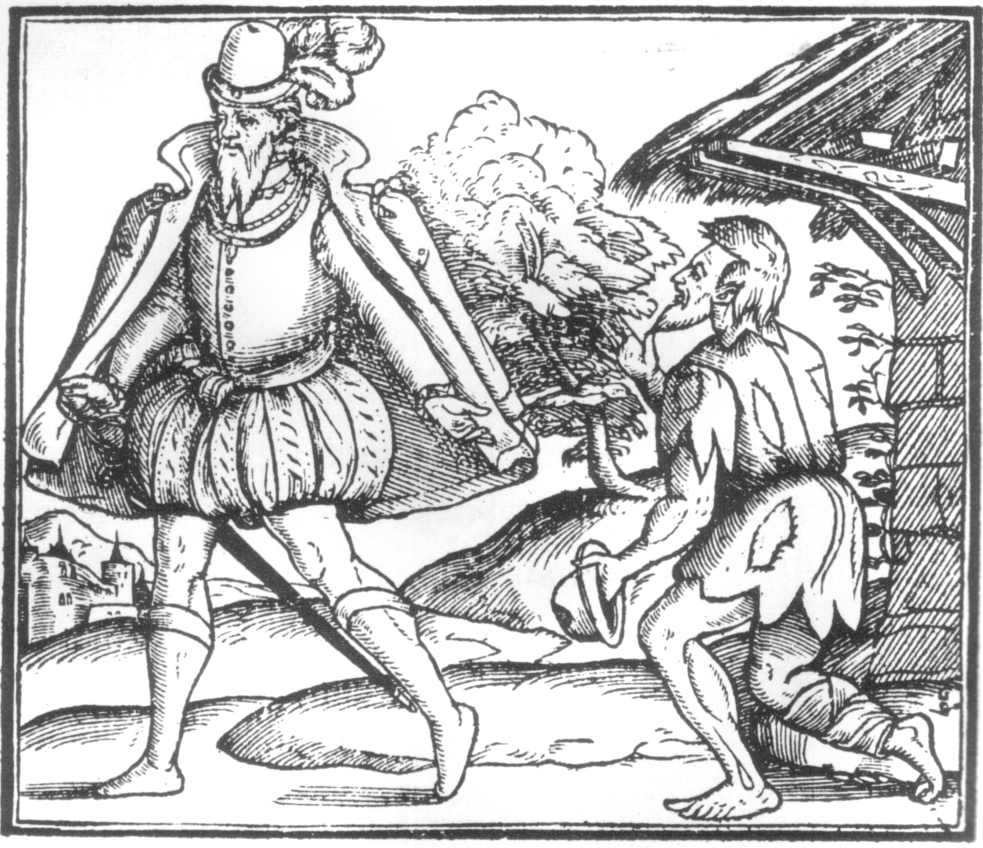|
Priors Hardwick
Priors Hardwick is a village and civil parish in the Stratford district of Warwickshire, England. The population of the civil parish as taken at the 2011 census was 172. The name derives from the fact that it was originally a manor belonging to the Priors of Coventry. History The oldest houses in the village are centred on the village green, with The Butcher's Arms dated as 1562, although some sources place it back as far as 1375. The proximity to the drover's road known as the Welsh Road influenced the village and the naming of local landmarks. The cattle drovers used to water their animals at a pond outside the village, which resulted in it being named ''Cowpool''. This is unusual, since locally, such waterholes were named ''pits'', rather than the Welsh-derived name ''pool'' (pwyll). ''London End'' in the village, and various buildings with ''welsh'' in their name also derive from the closeness of the road. The original settlement is on the government's list of Schedu ... [...More Info...] [...Related Items...] OR: [Wikipedia] [Google] [Baidu] |
United Kingdom Census 2011
A Census in the United Kingdom, census of the population of the United Kingdom is taken every ten years. The 2011 census was held in all countries of the UK on 27 March 2011. It was the first UK census which could be completed online via the Internet. The Office for National Statistics (ONS) is responsible for the census in England and Wales, the General Register Office for Scotland (GROS) is responsible for the census in Scotland, and the Northern Ireland Statistics and Research Agency (NISRA) is responsible for the census in Northern Ireland. The Office for National Statistics is the executive office of the UK Statistics Authority, a non-ministerial department formed in 2008 and which reports directly to Parliament. ONS is the UK Government's single largest statistical producer of independent statistics on the UK's economy and society, used to assist the planning and allocation of resources, policy-making and decision-making. ONS designs, manages and runs the census in England an ... [...More Info...] [...Related Items...] OR: [Wikipedia] [Google] [Baidu] |
Stratford-on-Avon (district)
Stratford-on-Avon is a local government district in southern Warwickshire, England. The district is named "Stratford-on-Avon" unlike its main town of Stratford-upon-Avon where the district council is based. The district is mostly rural and covers most of the southern half of Warwickshire. As well as Stratford, other significant places in the district includes the towns of Alcester, Southam, Shipston-on-Stour and Henley-in-Arden, and the large villages of Bidford-on-Avon, Studley and Wellesbourne, plus numerous other smaller villages and hamlets. It borders the Warwickshire districts of Warwick to the north, and Rugby to the north-east. It also borders the neighbouring counties of the West Midlands, Worcestershire, Gloucestershire, Oxfordshire, and Northamptonshire. History The district was formed on 1 April 1974 under the Local Government Act 1972 by the merger of the municipal borough of Stratford-upon-Avon, Alcester Rural District, Shipston-on-Stour Rural District ... [...More Info...] [...Related Items...] OR: [Wikipedia] [Google] [Baidu] |
Warwickshire
Warwickshire (; abbreviated Warks) is a county in the West Midlands region of England. The county town is Warwick, and the largest town is Nuneaton. The county is famous for being the birthplace of William Shakespeare at Stratford-upon-Avon and Victorian novelist George Eliot, (born Mary Ann Evans), at Nuneaton. Other significant towns include Rugby, Leamington Spa, Bedworth, Kenilworth and Atherstone. The county offers a mix of historic towns and large rural areas. It is a popular destination for international and domestic tourists to explore both medieval and more recent history. The county is divided into five districts of North Warwickshire, Nuneaton and Bedworth, Rugby, Warwick and Stratford-on-Avon. The current county boundaries were set in 1974 by the Local Government Act 1972. The historic county boundaries included Coventry, Sutton Coldfield and Solihull, as well as much of Birmingham and Tamworth. Geography Warwickshire is bordered by Leicestershire to the nort ... [...More Info...] [...Related Items...] OR: [Wikipedia] [Google] [Baidu] |
Kenilworth And Southam (UK Parliament Constituency)
Kenilworth and Southam is a constituency in Warwickshire, England represented in the House of Commons of the UK Parliament since 2010 by Jeremy Wright, a Conservative who served as Culture Secretary until 24 July 2019, having previously served as Attorney General for England and Wales from 2014 to 2018. Members of Parliament Constituency profile The seat is overwhelmingly rural; most properties have large plots and a substantial majority are semi-detached or detached. This is geographically one of the largest seats in the West Midlands and one of its safest Conservative seats. The historic town of Kenilworth, with a population of around 23,000, is the largest settlement in the area, with the small town of Southam (6,500) second. There are plenty of small villages, hamlets and farms elsewhere. The seat surrounds the much more urban Warwick and Leamington constituency on three sides. It also borders southern Coventry; Coventry Airport is just within in the constituency. ... [...More Info...] [...Related Items...] OR: [Wikipedia] [Google] [Baidu] |
Civil Parish
In England, a civil parish is a type of Parish (administrative division), administrative parish used for Local government in England, local government. It is a territorial designation which is the lowest tier of local government below districts of England, districts and metropolitan and non-metropolitan counties of England, counties, or their combined form, the Unitary authorities of England, unitary authority. Civil parishes can trace their origin to the ancient system of Parish (Church of England), ecclesiastical parishes, which historically played a role in both secular and religious administration. Civil and religious parishes were formally differentiated in the 19th century and are now entirely separate. Civil parishes in their modern form came into being through the Local Government Act 1894, which established elected Parish councils in England, parish councils to take on the secular functions of the vestry, parish vestry. A civil parish can range in size from a sparsely ... [...More Info...] [...Related Items...] OR: [Wikipedia] [Google] [Baidu] |
Prior (ecclesiastical)
Prior (or prioress) is an ecclesiastical title for a superior in some religious orders. The word is derived from the Latin for "earlier" or "first". Its earlier generic usage referred to any monastic superior. In abbeys, a prior would be lower in rank than the abbey's abbot or abbess. Monastic superiors In the Rule of Saint Benedict, the term appears several times, referring to any superior, whether an abbot, provost, dean, etc. In other old monastic rules the term is used in the same generic sense. With the Cluniac Reforms, the term ''prior'' received a specific meaning; it supplanted the provost or dean (''praepositus''), spoken of in the Rule of St. Benedict. The example of the Cluniac congregations was gradually followed by all Benedictine monasteries, as well as by the Camaldolese, Vallombrosians, Cistercians, Hirsau congregations, and other offshoots of the Benedictine Order. Monastic congregations of hermit origin generally do not use the title of abbot for the hea ... [...More Info...] [...Related Items...] OR: [Wikipedia] [Google] [Baidu] |
Coventry
Coventry ( or ) is a city in the West Midlands, England. It is on the River Sherbourne. Coventry has been a large settlement for centuries, although it was not founded and given its city status until the Middle Ages. The city is governed by Coventry City Council. Formerly part of Warwickshire until 1451, Coventry had a population of 345,328 at the 2021 census, making it the tenth largest city in England and the 12th largest in the United Kingdom. It is the second largest city in the West Midlands region, after Birmingham, from which it is separated by an area of green belt known as the Meriden Gap, and the third largest in the wider Midlands after Birmingham and Leicester. The city is part of a larger conurbation known as the Coventry and Bedworth Urban Area, which in 2021 had a population of 389,603. Coventry is east-south-east of Birmingham, south-west of Leicester, north of Warwick and north-west of London. Coventry is also the most central city in Englan ... [...More Info...] [...Related Items...] OR: [Wikipedia] [Google] [Baidu] |
Drover's Road
A drovers' road, drove ''roador droveway is a route for droving livestock on foot from one place to another, such as to market or between summer and winter pasture (see transhumance). Many drovers' roads were ancient routes of unknown age; others are known to date back to medieval or more recent times. Description Drovers' roads are often wider than other roads, able to accommodate large herds or flocks. Packhorse ways were quite narrow as the horses moved in single file, whereas drove roads were at least and up to wide.Addison (1980), Pp. 70-78. In the United Kingdom, where many original drovers' roads have been converted into single carriageway metalled roads, unusually wide verges often give an indication of the road's origin. In Wales, the start of many droveways, drovers' roads are often recognisable by being deeply set into the countryside, with high earth walls or hedges. The most characteristic feature of these roads is the occasional sharp turn in the road, which ... [...More Info...] [...Related Items...] OR: [Wikipedia] [Google] [Baidu] |
Welsh Road
The Welsh Road, also known as the Welshman's Road or the Bullock Road, was a drover's road running through the English Midlands, used for transporting cattle from North Wales to the markets of South East England. Drovers and their herds would follow the line of Watling Street from Shrewsbury and over Cannock Chase to Brownhills, from where the Welsh Road ran through Stonnall, Castle Bromwich, Stonebridge, Kenilworth, Cubbington, Offchurch, Southam, Priors Hardwick, Boddington, Culworth, Sulgrave, Syresham, Biddlesden, and Buckingham. The age of the route is not known. The parish records of Helmdon record money being given in 1687 "to a poor Welshman who fell sick on his journey driving beasts to London", but many lengths of the road coincide with parish or manorial boundaries, suggesting that it probably formed an ancient trackway dating to the pre-Roman era. The northern section of the route from Brownhills to Stonebridge was made a turnpike by the Broughton, C ... [...More Info...] [...Related Items...] OR: [Wikipedia] [Google] [Baidu] |
Cattle Drovers
Droving is the practice of walking livestock over long distances. It is a type of herding. Droving stock to market—usually on foot and often with the aid of dogs—has a very long history in the Old World. An owner might entrust an agent to deliver stock to market and bring back the proceeds. There has been droving since people in cities found it necessary to source food from distant supplies. Description Droving is the practice of moving livestock over long distances by walking them "on the hoof". Droving is used for moving large herds over long distances, sometimes several hundred kilometers. It was carried out by shepherds. The earliest written evidence about shepherds and their dogs dates back to the 14th century. Thousands of cattle were moved along the roads of Europe and Great Britain, and later sheep, goats, pigs and even geese and turkeys. The journey from pasture to market, slaughterhouse, or buyer could take anywhere from a few weeks to a few months. The herd moved d ... [...More Info...] [...Related Items...] OR: [Wikipedia] [Google] [Baidu] |
Scheduled Ancient Monument
In the United Kingdom, a scheduled monument is a nationally important archaeological site or historic building, given protection against unauthorised change. The various pieces of legislation that legally protect heritage assets from damage and destruction are grouped under the term "designation." The protection provided to scheduled monuments is given under the Ancient Monuments and Archaeological Areas Act 1979, which is a different law from that used for listed buildings (which fall within the town and country planning system). A heritage asset is a part of the historic environment that is valued because of its historic, archaeological, architectural or artistic interest. Only some of these are judged to be important enough to have extra legal protection through designation. There are about 20,000 scheduled monuments in England representing about 37,000 heritage assets. Of the tens of thousands of scheduled monuments in the UK, most are inconspicuous archaeological sites, but ... [...More Info...] [...Related Items...] OR: [Wikipedia] [Google] [Baidu] |
Poor Law
In English and British history, poor relief refers to government and ecclesiastical action to relieve poverty. Over the centuries, various authorities have needed to decide whose poverty deserves relief and also who should bear the cost of helping the poor. Alongside ever-changing attitudes towards poverty, many methods have been attempted to answer these questions. Since the early 16th century legislation on poverty enacted by the English Parliament, poor relief has developed from being little more than a systematic means of punishment into a complex system of government-funded support and protection, especially following the creation in the 1940s of the welfare state. Tudor era In the late 15th century, parliament took action on the growing problem of poverty, focusing on punishing people for being " vagabonds" and for begging. In 1495, during the reign of King Henry VII, Parliament enacted the Vagabond Act. This provided for officers of the law to arrest and hold "all ... [...More Info...] [...Related Items...] OR: [Wikipedia] [Google] [Baidu] |




